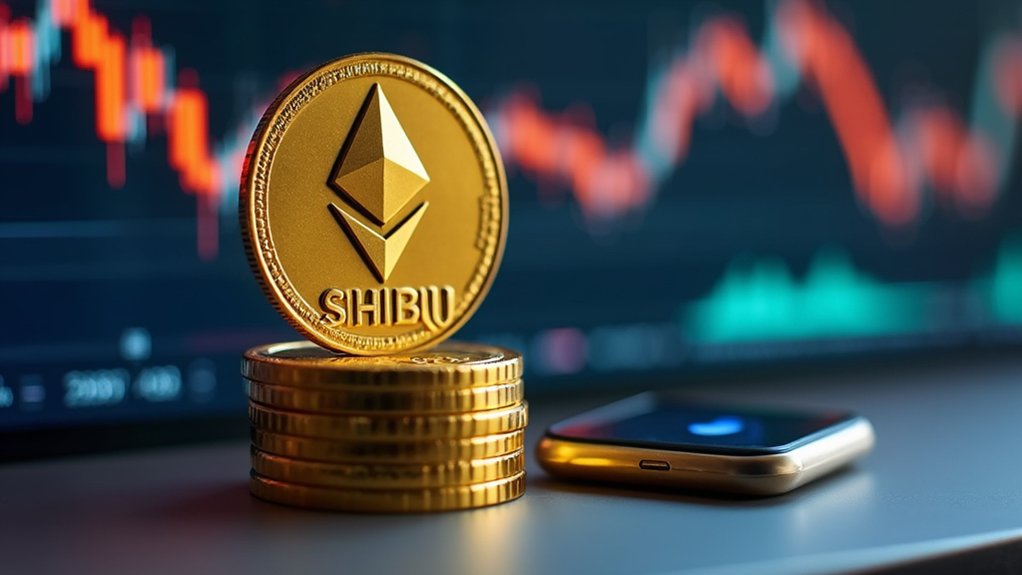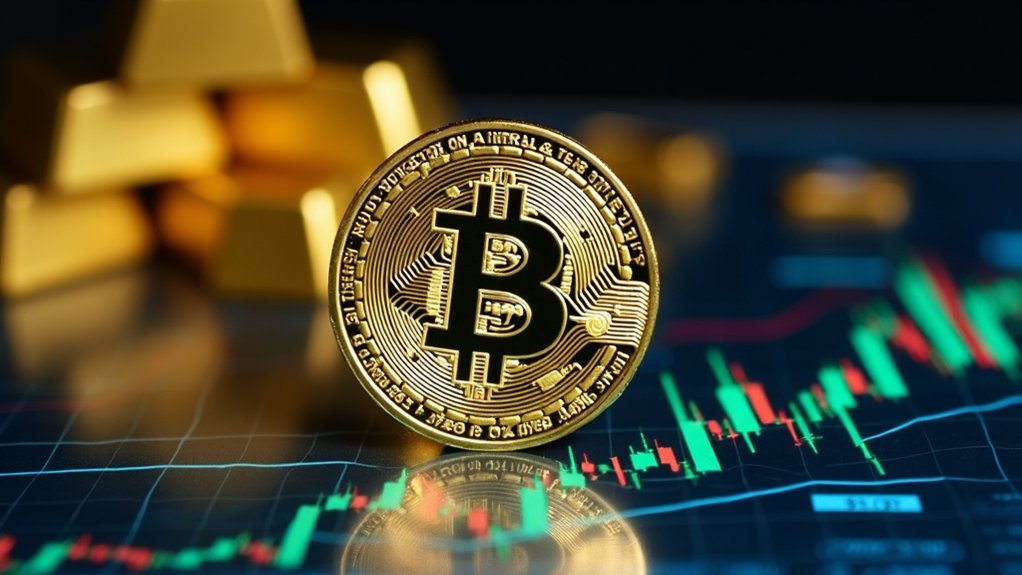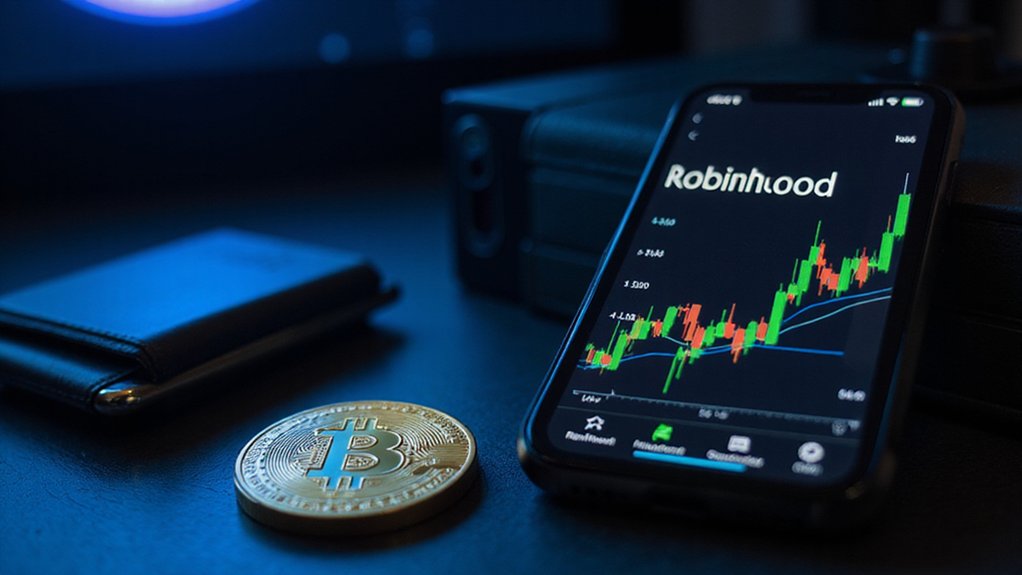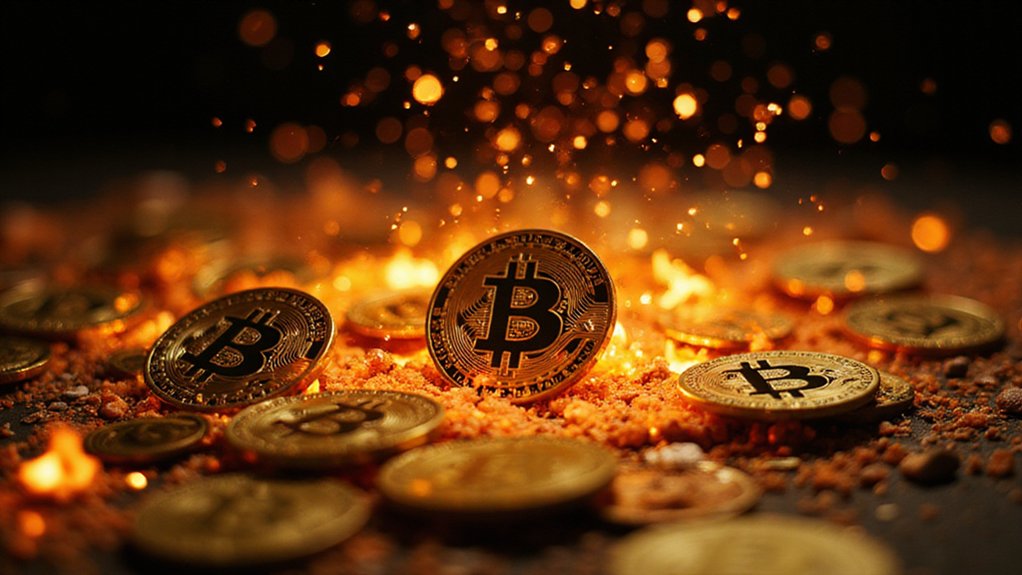Cryptocurrency mining involves a peculiar economic bargain: specialized computers compete to solve complex mathematical puzzles, with winners earning the right to validate transactions and add them to the blockchain. This computational arms race—simultaneously a verification system and token distribution mechanism—rewards successful miners with newly minted cryptocurrency and transaction fees. The process guarantees network security through its prohibitive cost structure (attacking the network would require controlling 51% of computing power), though environmental concerns persist as operations consume electricity at national scales. Further exploration reveals mining’s evolution from hobbyist pursuit to industrial enterprise.

How does a digital currency—existing purely in the virtual world—manage to establish trust and prevent fraud without the oversight of traditional financial institutions? The answer lies in cryptocurrency mining, a decentralized verification system that replaces traditional banking authorities through competitive computational processes. Rather than relying on a central arbiter, cryptocurrencies distribute this responsibility across a network of participants who validate transactions and add them to a public ledger known as the blockchain.
The mining process operates through a remarkably elegant (if energy-intensive) workflow. When users initiate transactions, these enter a holding area called the “mempool.” Miners—individuals or organizations operating specialized hardware—compete to solve complex cryptographic puzzles that, once solved, validate a block of transactions. The first to crack this mathematical conundrum broadcasts their solution to the network, where other nodes verify its accuracy. Successful miners must locate a specific nonce value that produces a hash meeting the network’s difficulty requirements. Upon consensus, the block joins the chain permanently, and the successful miner receives newly minted cryptocurrency plus transaction fees as compensation for their computational labor. This competitive process requires miners to use powerful application-specific integrated circuits for effective mining in today’s environment.
Mining transforms computation into consensus, validating digital trust through mathematical competition.
This economic incentive structure forms the beating heart of the mining ecosystem. Block rewards—declining systematically through events like Bitcoin’s quadrennial “halving”—combine with user-paid transaction fees to make mining potentially profitable¹. The financial calculus involves balancing hardware investments, electricity costs, and reward potential—a formula that has driven both technological innovation and geographic arbitrage as operations migrate to regions offering cheaper power. Mining will continue until the 21 million bitcoins limit is reached, after which miners will rely solely on transaction fees for compensation.
Mining’s security mechanism hinges on making fraud prohibitively expensive. The computational work required to alter the blockchain would cost more than any potential fraudulent gain—a concept known as Proof-of-Work. This elegant solution comes with substantial energy requirements; Bitcoin mining alone consumes electricity comparable to small nations, prompting a gradual shift toward renewable energy sources and alternative validation methods like Proof-of-Stake.
As regulatory scrutiny intensifies and block rewards diminish, the mining landscape continues evolving. The days of profitable mining on consumer hardware have largely vanished, replaced by industrial-scale operations and mining pools where participants combine resources to increase reward frequency—demonstrating how quickly theoretical cryptographic concepts materialize into complex economic ecosystems.
¹Though increasingly competitive margins have rendered casual mining largely unprofitable.
Frequently Asked Questions
Can I Mine Cryptocurrency With My Smartphone?
While technically feasible, smartphone cryptocurrency mining represents a triumph of optimism over economic reality.
The computational demands of most cryptocurrencies vastly exceed mobile processing capabilities, resulting in negligible returns that hardly justify the battery drainage and potential device damage.
Some lightweight cryptocurrencies might be marginally more suitable, but even then, the economics remain questionable.
Users determined to participate in the mining ecosystem would be better served exploring alternative involvement methods rather than subjecting their devices to this particular digital exercise in futility.
How Much Electricity Does Mining Consume?
Mining cryptocurrency consumes substantial electricity—approximately 110 TWh globally as of 2022 (representing 0.4% of worldwide usage).
Bitcoin alone demands energy comparable to Poland’s entire consumption, reaching an all-time high in early 2022.
In the United States, crypto mining accounts for 0.6% to 2.3% of national electricity usage.
Mining operations typically maintain an 80% utilization rate of their maximum capacity, creating consistent demand that often strains local grids and primarily relies on fossil fuel sources.
Are Some Cryptocurrencies Easier to Mine Than Others?
Yes, cryptocurrencies vary greatly in mining difficulty.
Algorithms play a decisive role—Monero’s RandomX remains relatively CPU-friendly, while Bitcoin’s SHA-256 demands specialized ASIC hardware (rendering consumer-grade mining virtually futile).
Newer or less popular cryptocurrencies often feature lower difficulty levels, making them accessible to modest mining setups.
The algorithmic design intentionally creates these disparities—Ethereum’s memory-hard Ethash, for instance, was specifically engineered to resist the ASIC domination that characterizes Bitcoin’s mining landscape.
Is Mining Cryptocurrency Legal in All Countries?
Cryptocurrency mining inhabits a legal gray zone globally, with a patchwork of regulations reflecting diverse governmental stances.
While nations like the U.S. and Canada maintain relatively hospitable environments for miners, others—China being the prime example—have instituted outright bans.
The regulatory spectrum spans from Georgia’s tax exemptions to Afghanistan’s Taliban-enforced prohibition.
Regulatory uncertainty predominates in countries like India, where authorities continue wrestling with broader cryptocurrency frameworks—leaving miners traversing a labyrinth of ambiguous legality.
What Happens to Mining Rewards After a Halving Event?
After a halving event, mining rewards are slashed by precisely 50%, creating an immediate revenue shock for miners who suddenly find themselves performing the same computational work for half the compensation.
This mathematical reality (programmed directly into protocols like Bitcoin) forces miners into a Darwinian scramble—either upgrade equipment for greater efficiency, hope for compensatory price appreciation, or exit the market entirely.
Historically, the reduced supply has eventually led to price increases, somewhat offsetting miners’ initial pain.









